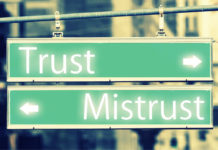Andrew Cannon, GRBN’s Executive Director, reflects on the importance of a proper ROI analysis when deciding whether or not it makes sense to go down the DIY road, and if so, to what extent.
What is the real benefit and cost of DIY?
As part of the ROI of Insights measurement process, it is important to look closely at the ROI of in-sourcing vs. out-sourcing.
If Insights, and by extension market research, are seen as costs and not investments by a company’s senior management, then it is easy to make the case for in-sourcing. As one client we talked to put it: “we were able to save X million dollars on our market research spend budget by bringing the work in-house”. In other words they were able to save on variable cost spending by creating an in-house agency of sorts, which took on the production tasks previously handled by their ‘vendors’; questionnaire writing, scripting, fieldwork management, data processing etc..
ROI based on variable cost budget efficiency is a dangerous game
From a ‘money spent on market research is a cost‘ perspective, this undertaking delivered a strong ROI to the company, but I don’t think that tells the whole story.
One serious challenge with the ROI of Insights being based on variable cost budget efficiency is that of diminishing returns. Although technology advancements help with efficiencies, it is likely to become harder and harder to make significant dollar savings from an ever-diminishing budget. Once the external spend budget has been cut to the bone, the focus of the finance team is likely to shift to reducing the Insights team’s headcount budget, meaning that the team’s ability to meet the needs of the organization will be decreased, leading to less satisfaction with the money spent on the team and a greater likelihood of further cuts.
The second challenge is that a lot of the work that is brought in house are production tasks: tasks, which are not adding a huge amount of value.
What if market research is perceived by senior management to be an investment?
I would argue that the true power of Insights is in adding value to the business to a value much greater than the money spent on Insights. Uncovering new customer needs, preventing wrong, and costly, new product development choices being made, making significant savings to production costs, increasing the efficiency and effectiveness of the marketing communications budget… these are just a few examples of how Insights can generate a huge return on the investment. These are the things that a ROI of Insights report to senior management needs to focus on.
How are Insights team members spending their time?
How does an Insights team ensure they achieve a high ROI on their headcount budget as well as their variable cost budget? Whilst running projects in indeed part of the process, I would argue that some other parts of the process are more important to delivering a strong ROI. These would include: understanding the decision-making process, having insights (and team members) integrated into those processes effectively, understanding the business needs and proactively driving insights as a means to meeting those needs, generating insights, making sure the generated insights (and data) feed into the decision-making process at the right time in the right format (i.e. turning in Insights in action). Every hour spend on production by the Insights is therefore an hour not spent on the above.
What is the true ROI on DIY?
I am not arguing against in-sourcing per se. Obviously, if all of the above high-value-add tasks are being carried out to full-effect, then spending additional hours on production tasks is certainly justifiable.
What I am arguing is that from a ROI perspective, one needs to consider the opportunity cost associated with the Insights team performing production tasks instead of some of the other more value adding tasks.
This opportunity cost analysis might lead you to the conclusion that your team’s time should be freed up from production tasks and allocated to walking the corridors, meeting with decision makers and helping turn insights into action.
Improving the client-agency relationship
I am not saying that there is anything wrong with DIY per see, just that a thorough ROI analysis of the headcount budget should be conducted alongside the ROI analysis of the variable cost budget. In addition, both of those analyses should be based primarily on value added to the business and secondarily on Insights budget efficiencies.
If the client is to out-source part of the process to agencies, then the agency-client relationship needs to work efficiently. One of the clients I talked with about why in-sourcing was a good return on investment for them was that their agency-client relationship was broken. Her team had to spend lots of time basically re-doing the agency’s work, rewriting questionnaires and reports for example, as the materials produced by the agency were not good enough: they lacked an understanding of the client’s business and the in-house terminology used.
This of course needs to be fixed, but this to me is not enough of a justification in itself for in-sourcing. It is a justification for investing in improving the agency-client relationship or maybe even changing the agency, but the ROI from this in-sourcing decision comes nowhere near to matching the ROI from the business value adding impact of Insights.
The obvious follow-up question is: Does the Insights team have the right capabilities to deliver on this business-value-adding ROI of Insights model? But that is a question to be addressed a later date.
If you are interested in the ROI of Insights topic please visit
www.roiofinsights.com and check out the resources there, including the Invest in Insights Handbook.

Andrew Cannon
GRBN  Andrew Cannon
GRBN
Andrew Cannon
GRBN 






